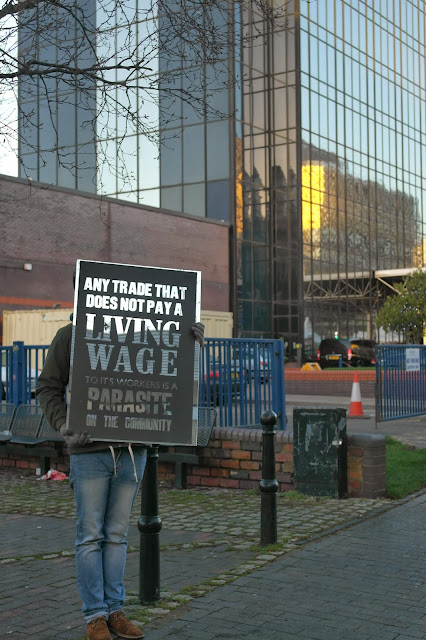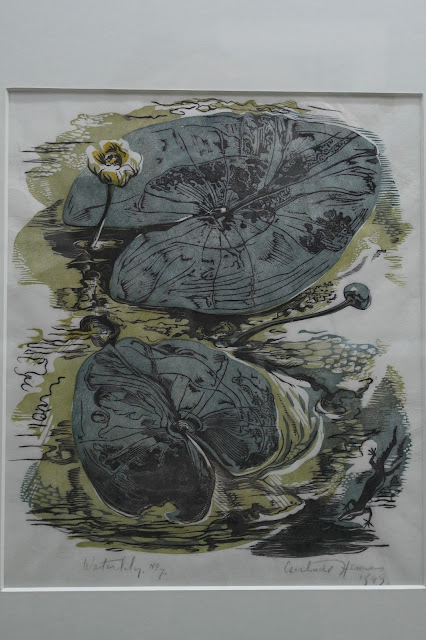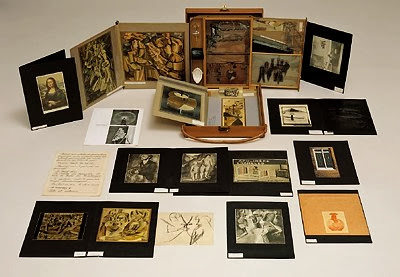In the Dale End/Bull Street/High Street location (formally Crooked Lane) there are pawnbrokers, payday loan companies, pound shops and the ubiquitous fast food outlets that offer only minimum wage and operate zero hours contracts. It was very cold and, whilst not as windy as in previous days, it still proved very difficult to hold the mirror steady enough to get a decent reflected image. The relative position of the camera and the angle of the mirror was crucial so as not to show the photographer in the mirror (as the first image shows). Despite these difficulties, I think the images show the potential of the idea. I prefer the photos that I took of my son holding the mirror from behind, rather than those of me holding it, as it is too distracting.
The Bridge Street photos are not as successful, I feel. The surrounding area has an interesting combination of canal architecture that would be little changed since Cadbury's time, run down 60's buildings, including an abandoned hospital, and the enormous modern Hyatt Hotel, but it proved difficult to show these all in one photo. Also the link to the statement on the mirror is not as obvious.
I need to get out and take more photos, as I'm sure I can improve on these given better weather and light conditions.




































